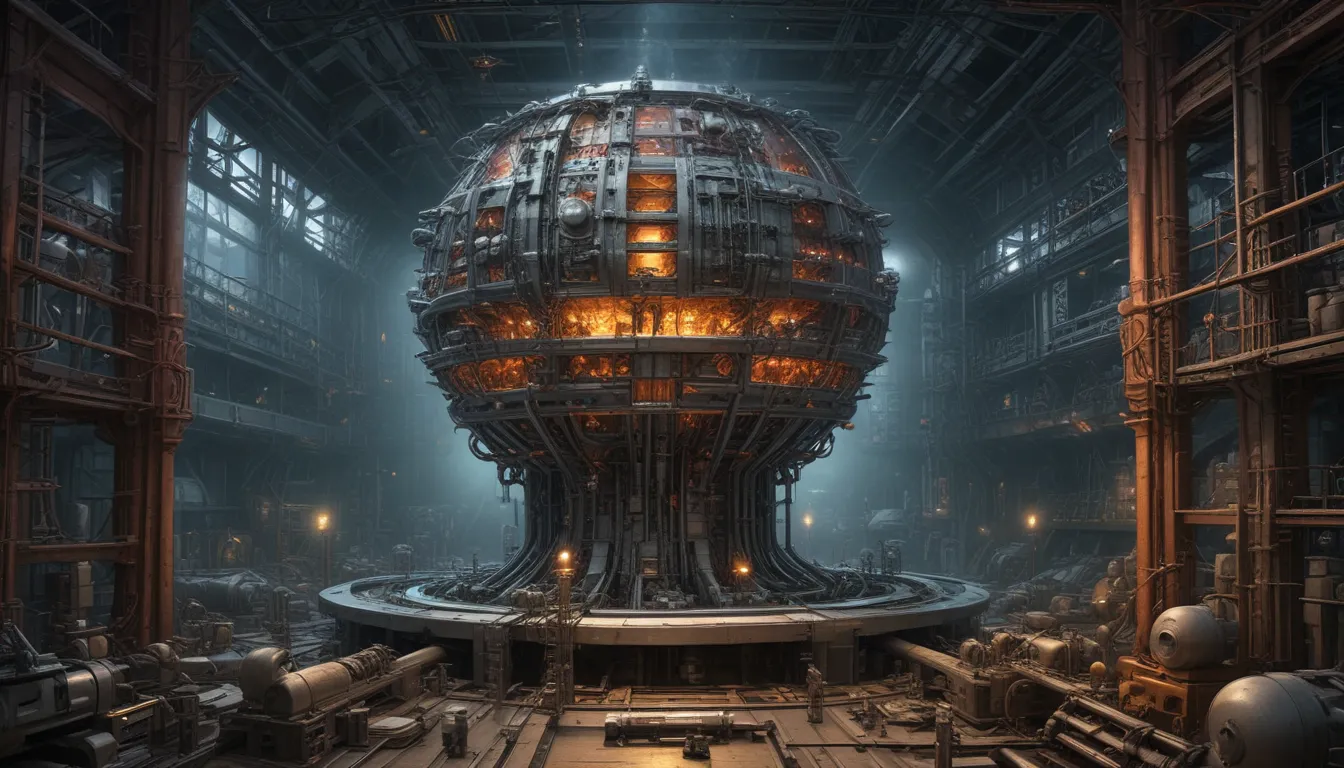A Note About Images: The images used in our articles are for illustration purposes only and may not exactly match the content. They are meant to engage readers, but the text should be relied upon for accurate information.
Welcome to the captivating realm of nuclear fusion, where science meets the potential to revolutionize our world with clean, limitless energy. From powering the sun to its pursuit as a future energy source on Earth, nuclear fusion holds immense promise for our planet. In this article, we will delve into 13 astonishing facts about nuclear fusion that will leave you in awe of this incredible phenomenon. Get ready to explore the mind-blowing world of nuclear fusion and uncover fascinating insights that will expand your knowledge.
Key Takeaways:
- Nuclear fusion powers the Sun and stars: by combining atoms to create energy, it could provide a sustainable source for the future.
- Fusion reactions release huge amounts of energy: revolutionizing the world if mastered for practical use on Earth.
Nuclear Fusion: The Powerhouse of Stars
The Sun, our fusion reactor in the sky, generates energy by fusing hydrogen atoms into helium. This process, fueled by immense gravitational force and high temperatures, releases a vast amount of energy essential for life on Earth.
The Core of Stars: Sustaining Luminescence through Fusion
Stars, including our Sun, maintain their luminosity and heat through continuous fusion reactions in their cores. This fusion of hydrogen into helium produces energy that balances gravity, ensuring a star’s stability and brightness.
Forming Elements through Fusion
In fusion reactions, two light atomic nuclei merge to form a heavier nucleus, creating essential elements like helium, carbon, and oxygen crucial for life as we know it.
Unlocking Boundless Energy
In comparison to other energy sources, nuclear fusion yields an incredibly high amount of energy. A single fusion reaction releases approximately 10 million times more energy than a typical chemical reaction.
The Promise of Clean Energy
Unlike fossil fuels, nuclear fusion emits no harmful greenhouse gases or long-lived radioactive waste. Successful harnessing of fusion power could offer a nearly limitless and eco-friendly energy source.
Overcoming Scientific Hurdles
Achieving controlled fusion reactions on Earth is a major scientific challenge. Scientists are dedicated to overcoming technical complexities to contain and manipulate extremely hot plasma for sustained fusion reactions.
Abundant Fuel Source
The primary fuel for fusion reactions, hydrogen isotopes, are plentiful in seawater. Deuterium, a key isotope, extracted from water molecules could provide an almost limitless source of fuel.
Seeking Energy Balance: Net Energy Gain
Fusion research aims to attain net energy gain, surpassing the energy required to maintain and control the reaction. This objective could make fusion a self-sufficient, highly efficient energy source.
Extreme Conditions for Fusion
To initiate fusion, atomic nuclei must conquer strong repulsive forces. This feat is accomplished by heating the fuel to temperatures in the millions of degrees while confining it using intense magnetic fields or powerful laser beams.
From Energy Source to Weapon Potential
Fusion reactions, holding immense energy potential, are also studied for potential use in nuclear weapons. However, the focus of research primarily centers on peaceful applications of this technology.
Safety in Fusion
Fusion power plants are designed with inherent safety features. Unlike fission reactions that can lead to meltdowns, fusion reactions have built-in safety mechanisms, avoiding critical states or harmful outcomes in case of disruptions.
A Global Endeavor in Fusion Research
Unveiling the practical applications of nuclear fusion involves global collaboration on projects like the International Thermonuclear Experimental Reactor (ITER) and the National Ignition Facility (NIF). These initiatives aim to unlock fusion’s potential as a sustainable energy source.
The Future Powered by Fusion
The successful realization of practical fusion power could revolutionize our world, offering abundant, clean, and virtually limitless energy to address global energy and environmental challenges.
Conclusion
Nuclear fusion presents a phenomenal opportunity for our future, promising vast amounts of clean, sustainable energy. The astounding facts around fusion underscore the progress in this dynamic field, paving the way toward controlled fusion reactions. Exciting advancements in fusion technology hint at a future abundant in environmentally-friendly energy resources.
FAQs
Q: What is nuclear fusion?
A: Nuclear fusion is the process of merging two atomic nuclei to form a heavier nucleus, releasing a significant amount of energy.
Q: How does nuclear fusion differ from nuclear fission?
A: Fusion involves combining atomic nuclei, while fission involves splitting them. Fusion produces more energy and less radioactive waste compared to fission.
Q: Is nuclear fusion utilized for electricity generation?
A: While not currently in use, scientists are actively developing fusion reactors to harness fusion energy for controlled and sustainable electricity production.
Q: Can nuclear fusion serve as a clean energy source?
A: Yes, fusion has the potential to offer clean, sustainable energy by utilizing non-polluting hydrogen isotopes abundantly available in nature.
Q: How close are we to achieving practical nuclear fusion?
A: While progress has been significant, commercial-scale controlled fusion reactions are yet to be achieved. Ongoing research and experimental results show promising signs.
Q: Are there risks associated with nuclear fusion?
A: Fusion reactions pose fewer risks than fission reactions, lacking the potential for runaway reactions or harmful radioactive material releases. Challenges lie in maintaining high-temperature plasmas.
Q: Can nuclear fusion replace existing energy sources?
A: Successful harnessing of fusion could provide vast clean energy, reducing reliance on fossil fuels. Complete replacement would require significant progress and infrastructure development.
Exploring the captivating realm of nuclear fusion reveals a world of boundless energy potential. As we venture deeper into fusion’s complexities, its transformative impact on our future becomes increasingly palpable. With ongoing research and global collaboration, the dream of unlocking fusion power inches closer to reality, promising a future empowered by clean, sustainable energy resources.






